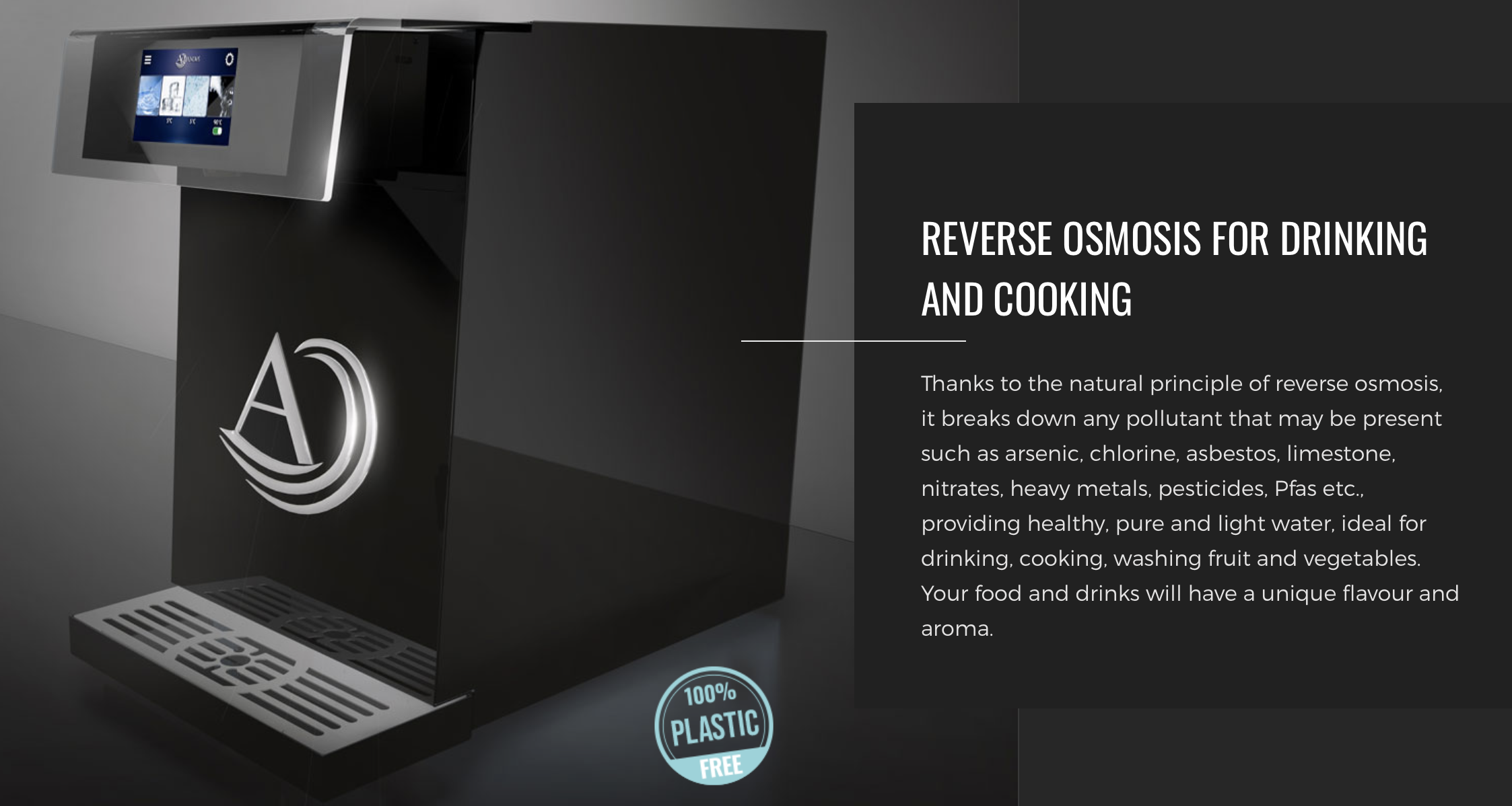Made in Italy, Aquanova is a renowned brand of professional and home water purifiers. Our water purifier ensures the best quality and safety by providing you with naturally good, healthy, and environmentally friendly water straight from your home’s tap.

Boiling, Chilled, Sparkling, Hot & Cold Filtered water in an instant
The most stylish and technologically advanced multifunction tap on the market using unique touch screen technology.
Made in Italy
WATER PURIFICATION AQUANOVA
AQUANOVA is a reverse osmosis water purifier which is modern and ecological choice.
AQUANOVA is made in Italy. Synonymous with quality, reliability, commitment, listening, efficiency and professionalism. We use the best resources and the best materials on the market to obtain purification systems that deliver healthy and good water.

WATER PURIFICATION AQUANOVA
Reverse osmosis (RO) water filtration systems are the only solution, most efficient and natural method of purifying water. The world’s purest and most sustainable systems for producing drinking water.
RO is a very effective method for purifying water of many impurities. It can remove contaminants such as fluoride, nitrates, lead, arsenic, chlorine, and more, giving you purer and clearer water. When compared to tap water, many individuals discover that water from a RO system has a crisp, refreshing taste.
With the AQUANOVA reverse osmosis water purifier, you can enjoy clean, fresh, and naturally good water generated right in your kitchen. It’s a modern and environmentally friendly option.
To safeguard your family’s health as well as the health of the entire planet. The most advanced and elegant reverse osmosis purifiers. The safety of pure water combined with the pleasure of chilled and sparkling water.
What is Reverse Osmosis and
How Does it Work?
Reverse Osmosis is one of the most effective forms of water filtration. Unlike carbon or chemical filtration systems, which employ specific materials to draw in or directly target the impurities in the water, reverse osmosis filters the water by forcing it through a material that is minuscule in size.
By applying an induced pressure to the water that is thirty times higher than usual, reverse osmosis allows the water’s particles to pass through the membrane while keeping and getting rid of all the contaminants the water picks up on its way through the pipes.
With a pore size of about 0.0001 microns, this semi-permeable membrane essentially traps any larger molecules of pollutants, organic compounds, or even salt while only permitting the small water molecules to pass through. Reverse osmosis was first developed to desalinate seawater and lessen the amount of strong chemical contaminants like heavy metals. Today, it is used in a wide range of commercial, military, government, and even domestic applications.
Advantages of using Aquanova in F&B catering product line.
ECONOMIC SAVINGS
Substantial savings are realized by doing away with the purchasing of bottled water
MODERN AND TRENDY CHOICE
The use of an Aquanova purification system is a modern and trendy choice
IMAGE
Customized bottles provide your venue a unique and elegant touch
SPACE SAVING
More space in cold rooms
TIME SAVING
Reduce the amount of time spent handling, storing, and returning empty bottles
PLASTIC FREE
Globally, there is an increasing number of appeals and initiatives calling for the ban of plastic, which is ruining the environment and our oceans
The most modern and avant-garde restaurants use the AQUANOVA the professional water dispenser, not only for the water to be served at the tables, but also for the water used in the kitchens to prepare genuine dishes, with an authentic flavour and free from harmful substances: characteristics made possible only thanks to pure and light water.
You may serve clients still, cold, sparkling or hot water with an AQUANOVA professional water dispenser. It’s also ideal for cooking.
Fully Customisable with Logo, Metallic Automotive Paints, And Every Combination of Stainless Steel, Crystal, Swarovski, Leathers and Precious Woods.
Health begins with Water you drink and the Air you breathe
Contact us to learn more about how we can help to improve you water and air quality

Climate Solutions Pte Ltd contributes to the development of healthier indoor air and water purification systems for use in residential, commercial, retail, and food and beverage settings.
The users’ daily lives have been impacted by the solutions. We are committed to your well-being and would be happy to give our expert advice.
CLIMATE SOLUTIONS PTE LTD
Copyright © 2024. All rights reserved
* Designed by Charis Concept






